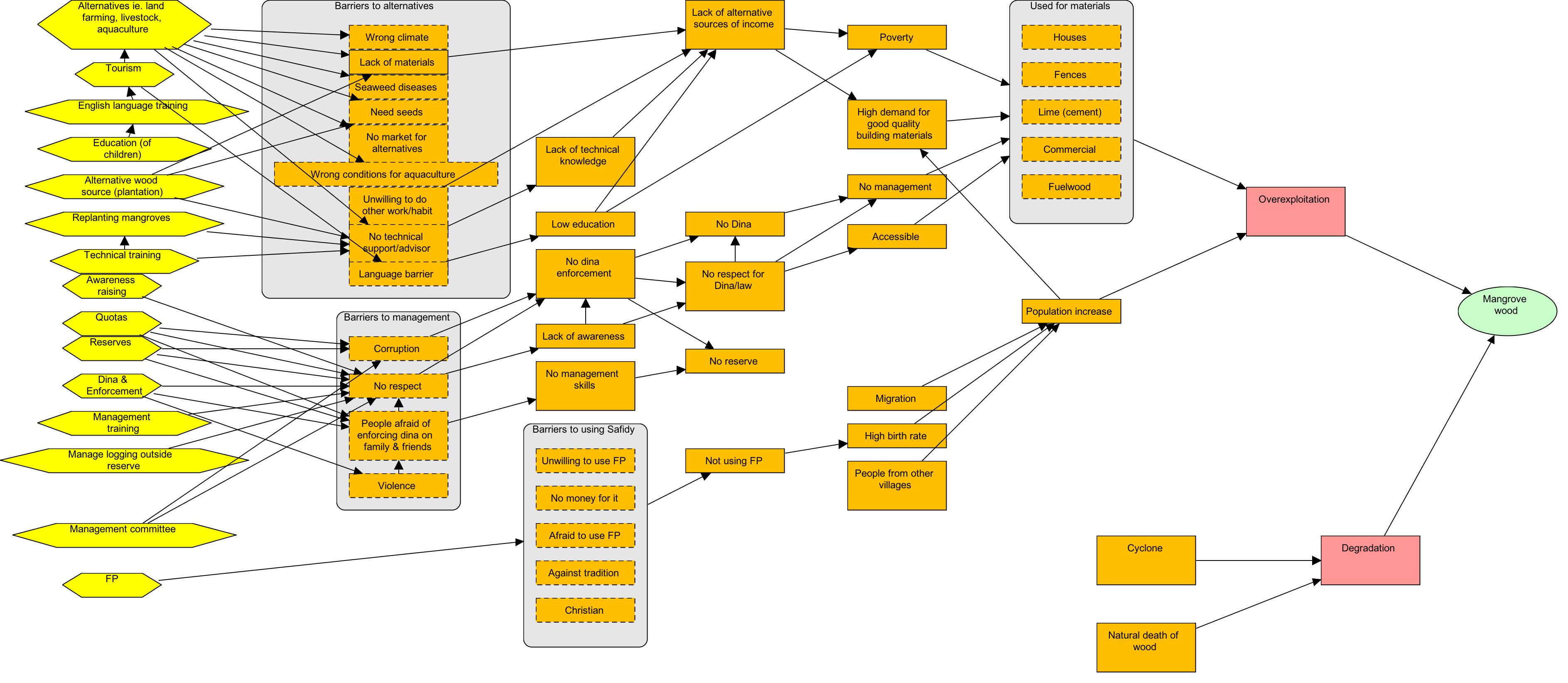

- The participatory concept model and strategy development exercise aims to identify the drivers and underlying causes of mangrove loss; and to identify potential strategies/solutions that could be implemented to reduce threats to mangrove and promote sustainable mangrove use.
- At the end of the exercise the community has developed a concept model. This model depicts the drivers of mangrove loss in their community and the additional factors which contribute to this loss.
- They identify a/many solution(s) and work through the activities they need to implement to reach their desired results through a theory of change (ToC).
- The exercise is carried out with community members in a focus group format development of the concept model and ToC is completed using different colored paper and chalk.
- Following the participatory meetings the final concept model with threat ratings, and ToC models are digitized using MiradiTM (2013) software.
- Announcement of the planning is sent to village leader prior to the exercise;
- High participation and presence of all stakeholders during the exercise and participants should be fully aware of the purpose of the exercise;
- The facilitator from the support organization has enough skills and is familiar with the concept model exercise and able to motivate people to express their idea;
- The support organization is able to adapt to the local context (using the available materials).
To address community reticence and for the better dialogue between the community, employing two community-based facilitators from the village to assist the Theory of change exercise is recommended. It is better to hire people already engaged in the LMMA management (dina enforcement committee, mangrove commission, women’s group) activities. The community-based facilitators are trained by the technical staff from the support organization a day before the participatory theory of change exercise. Volunteers from the community should be invited to present the outcome from their group work, aiming to assess the level of community on the concept model they developed. It is vital to ensure representation from key stakeholder groups and from women and young people who may otherwise be marginalised. If needed, separate women and men in different groups to facilitate open discussion.